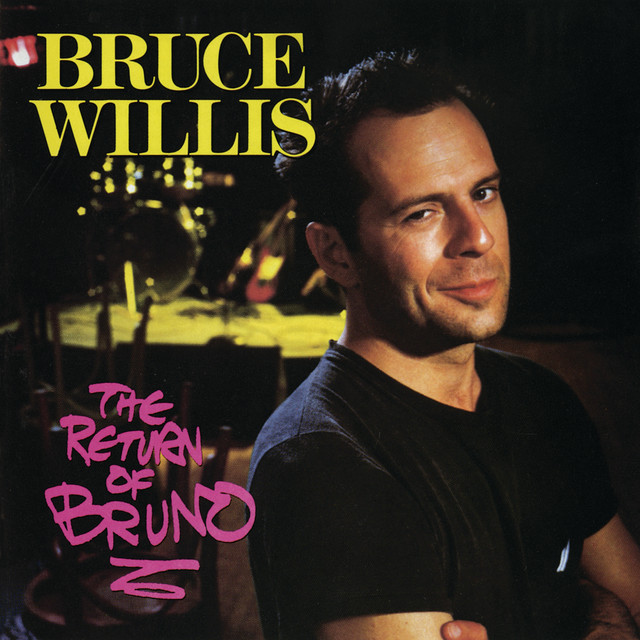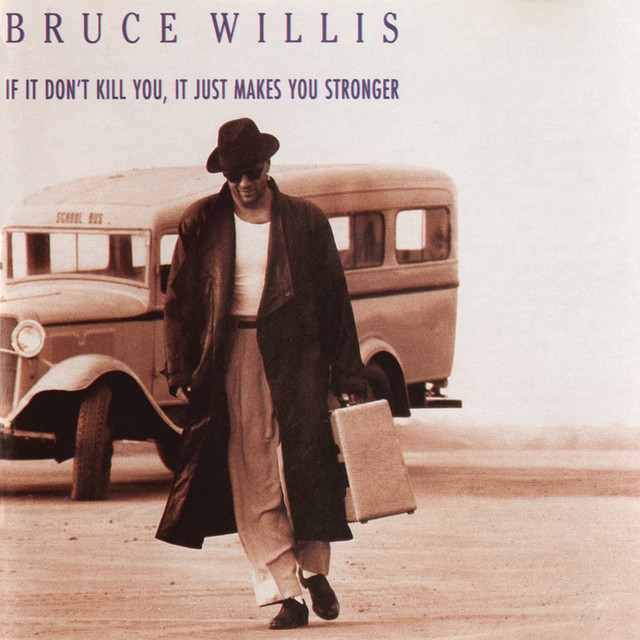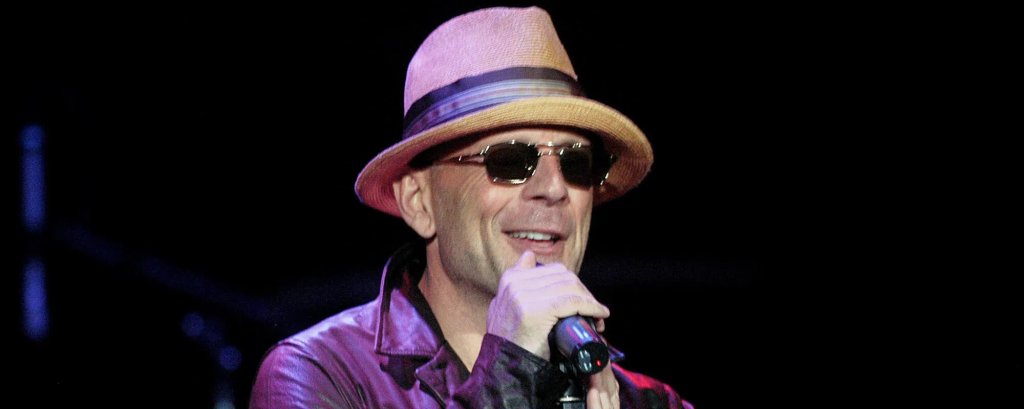I have reported on Bruce Willis before in these pages. Many of you will know that by February of 2023, Bruce was suffering from frontotemporal dementia, a devastating situation in any case but perhaps particularly considering the incandescent personality that Willis brought to his many TV and movie roles. His situation is sad for me personally as Bruce Willis was one of the first actors I loved as a youth among those that I discovered on my own as opposed to inheriting an actor from my parents or family members. It was watching him as David Addison on Moonlighting that set the hook for me and he remains near and dear to my heart today. For my look at the best of Bruce’s film roles, you can click here. But today we are looking at a sidebar to Willis’ career – let’s take a look at his work as a singer and at his two excellent albums.
Bruno Radolini may be the deepest of all the deep cuts we have tackled here at Your Home for Vintage Leisure. Starting out in Trenton, New Jersey, Bruno and his band the Bad Boys were the hottest act in the east and to a growing number of fans Bruno became a hero. Bruno and the Bad Boys signed a record deal and began appearing on television and their fame grew but sadly, their first album was lost in a fire. Bruno later broke up the band and formed the Crayon Jungle, fully exploring psychedelia before returning to a more earthy sound and performing at Woodstock. Sometime in the early 1970s, Bruno Radolini disappeared.
He was later discovered selling cars in Detroit. He was coerced back into the spotlight, working with acts like the Temptations and making his own music again. He rubbed artistic shoulders with groups like Kiss and the Bee Gees and he released his own disco album but after a poorly received foray into new wave in the early Eighties, he was gone again for a time – only to resurface singing opera at the Met. Finally, he reached the “victory lap” stage, released his “comeback” album and performed for adoring fans across the country.
Ever the creator of characters, this is the persona that Bruce Willis created for himself as a singer and he released his first record posing as Bruno Radolini. Sort of; more on that later. And so, instead of just delving into the music business like fellow actors Jack Wagner and Don Johnson had done before him, Bruce had some fun with it.

Appropriately, he hooked up with Motown Records, becoming one of the venerable label’s few white artists (another would be my second-favourite band of all-time, Rare Earth). I say appropriately because Bruce’s bag is rhythm and blues and soul music and The Return of Bruno basically adheres to this but with a “plastic” sheen that makes this album sound like much of the popular music released in the mid-1980s. By that I mean you should be prepared to hear slick production and some synthetic sounds. The record was produced by Robert Kraft. Kraft is one of those prolific composers and producers that remains anonymous though his work has been heard by many. He has made records with the likes of Johnny Mathis, Jimmy Buffett and Don Henley but much of his work was heard through his time as president of Fox Music. From 1994 to 2012, Kraft “supervised the music for more than 300 Fox feature films, as well as dozens of TV shows”; he worked on The Little Mermaid and was nominated for a Grammy, Oscar and Golden Globe for “Beautiful Maria of My Soul” from The Mambo Kings. His successful tenure at Fox saw tens of millions of records sold and a plethora of awards and nominations. He also co-produced one of the handful of singles from Olympian Carl Lewis. After The Return of Bruno, Willis and Kraft would team again to work on the screen story and music score for Bruce’s Hudson Hawk.
All the songs on the record are fun and there are no duds. The kicks come right out of the gate with “Comin’ Right Up”, a tune who’s lyrics really set the stage for the tone of the album. Bruno is a bartender and his interaction with a female customer leads to a late night visit. The lyrics are goofy maybe but they display the kind of lighthearted comedy you’d expect from Bruce in the Eighties so that makes them OK; “what’s that? Am I free later? Lemme put it to you this way – does a comet leave a crater?” And the vibe is set.
The hit is up next. “Respect Yourself” was a 1971 single by the Staples Singers released on Stax that reached #12 US Pop and #2 R&B (Hot Soul Singles). Bruce duets on his version with June Pointer of the Pointer Sisters and their version peaked at Number Five on the US Pop charts (For those scoring at home – with their hit singles, Jack Wagner reached #2, Don Johnson #5 and Patrick Swayze #3). I’ve never been crazy on this song in any of its versions. Much more enjoyable is the next track, Ry Cooder’s “Down in Hollywood”, released on Ry’s 1979 LP Bop Till You Drop. Again – as on the opener – we have an atmosphere of fun and looseness on this track that warns the SoCal neophyte of the traps of La La Land; “Down In Hollywood, better hope that you don’t run out of gas. Down In Hollywood, they’ll drag you right out of your car and kick your ass. Down in Hollywood, they’re standing on a corner just a-waiting for a sucker like you. Down in Hollywood, if you wanna stay healthy, just keep a-movin’ right on through” Also included in the song are the sounds of the street featuring various characters of the night and their goings-on. Great tune.
Official Bruce
The second single from this album was a cover of the Coasters’ “Young Blood” and here we have more good times in a spirited rendition. The comedy that marked all of the Coasters’ music is a good fit for Bruce and the lyrics here allow for some humorous moments from the boys singing backgrounds; “Then things went bad, I met her dad. He said ‘look, get your hands off my daughter ‘fore I play a little Hank Aaron medley on your head, y’unnerstand?” Side One ends with another high-profile guest appearance. The third single released was Bruce’s take on the Drifters’ “Under the Boardwalk” featuring the Temptations. It’s a pleasant version with Willis using a gentle voice and including the sounds you’d hear down by the shore. Interestingly, Bruce’s version was a huge hit in the UK, reaching the astounding position of Number 2 on the national charts (the Pet Shop Boys kept him from topping the chart) and ending 1987 as the country’s 12th best-selling single of the year.


Side Two gets off to a lively and inventive start. Some excellent special effects and a nod to James Bond lead into a great retro-sounding take on “Secret Agent Man/James Bond is Back”. Johnny Rivers had the hit version of “Secret Agent Man” in 1966, a song that served as the theme for the British spy series Danger Man that aired in the US as Secret Agent. Booker T. Jones adds his Hammond stylings to this finger-snapper. There is more comedy in the opening minutes of the Bruce Willis-Robert Kraft original “Jackpot (Bruno’s Bop)” featuring Willis’ accomplished harp-blowing. Instead of running out of steam, The Return of Bruno manages to end on some pretty high notes.
Maybe my favourite song on the record is courtesy of Allen Toussaint of N’Awlins. The late Toussaint produced Joe Cocker’s 1975 album Luxury You Can Afford featuring the Toussaint-penned opener “Fun Time”. Bruce’s version is a runaway train of vibrancy that is aided by a robust arrangement featuring guitar and horns – the horn charts, especially, are exceptional. The chicks singing back-up know what they are about and there was many a warm, spring night on which I would drive very fast in my 1983 Ford Escort with this tune blaring. “Lose Myself” is taken at a slower pace but it has a lot of character and the closer is “Flirting With Disaster”. This tune was co-written by Brock Walsh, who wrote this album’s opener and smooth jazz keyboardist Jeff Lorber. “Flirting With Disaster” completes this album’s deviation from pure R&B but it has a great late-80s pop song sound.
Official Bruce
You will often read of Bruce Willis presenting this record posing as his alter ego, Bruno Radolini. But I have been listening to this album for the last 30+ years and I have never thought of it that way. Yes, Bruce was having some fun creating this character and featuring him in a “mockumentary” that borrowed from Spinal Tap and Eddie Wilson. The TV special was farcical, really. Ringo Starr is on hand to report that Bruno introduced him to George Harrison and that started the Beatles. It was Bruno that suggested that Woodstock be a free concert; I chuckled when it is said that after performing at Yasgur’s farm, Bruno vowed to never again perform for less than 400,000 people. The Bee Gees appear to tell of Bruno helping them to write songs and Paul Stanley says it was Bruno who suggested his band wear makeup and leather – and lots more in a similar vein.
The Return of Bruno was released on January 20, 1987. For some reason, fully five singles were released from the record – in the US, “Respect Yourself”, “Young Blood” (#68) and “Under the Boardwalk” (#59) and in the UK “Secret Agent Man” (UK #43) and “Comin’ Right Up” (UK #73). These singles were doled out throughout 1987 but this year of Bruce Willis, singer would come to an end on November 2nd; the first day Willis went into production on Die Hard. When that seminal action film was released in the summer of ’88 and Bruce was catapulted to film stardom, making records took a back seat.

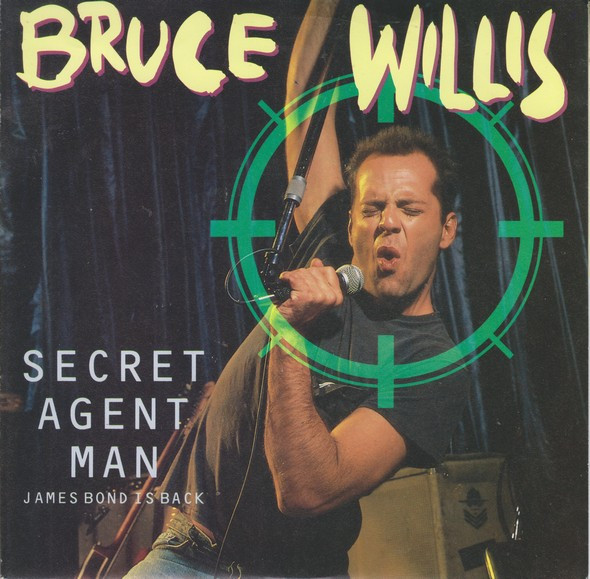
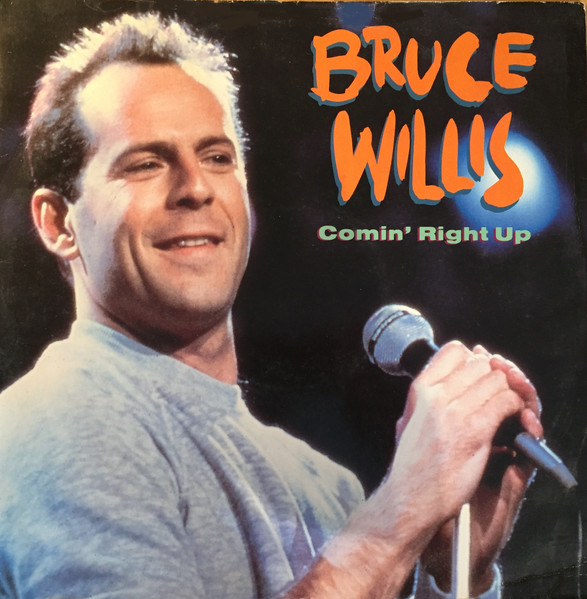
Perhaps remarkably and certainly surprisingly, Bruce Willis did release a follow-up record, though. Some today will be surprised that Bruce sang at all but many will know about his first record. His second, though, has vanished from memory and is a bona fide deep cut. Like all deep cuts we deal with here though it peeks out through the murky mists of time and it reveals within it’s dusty, hidden and buried cassette case a certain sparkling quality.

Even though he was now a major motion picture star – or somehow perhaps because of it – Bruce returned to the studio and to Motown Records for If It Don’t Kill You, It Just Makes You Stronger (1989). First and foremost, this sophomore effort is superior in presentation to Bruce’s debut for one simple reason; the sound of this second record is far more organic and earthy than the more polished and programmed Bruno. There are no credits for “programming” or drum machines or synthesizers and the like but instead I see upright bass, lots of Hammond B-3 and horns. Secondly is the content. There are three covers on If It Don’t Kill You but the rest of the songs were co-written by Bruce and his buddy Robert Kraft, who produced this album, as well. Also utilized throughout the record is Robben Ford, a prolific blues, jazz and rock guitarist once called one of the “100 Greatest Guitarists of the 20th Century” by Musician magazine. Let’s dig in to this excellent and loose good-time album.
“Pep Talk” is the lightweight but fun opener. This will be the tone with varying degrees for the rest of the album. Bruce provides a spoken introduction welcoming another fictional act – Jimmy and the Termites – to the stage and proceeds to blow a fine intro and things get to jumpin’. Might be as good a time as any to note that Bruce Willis can really blow the harmonica as he does on most of the tracks here. “Crazy Mixed-Up World” swings and struts and Bruce shares vocal duties with Robben Ford on this Willie Dixon oldie. Probably the highlight of the record is “Turn It Up (a Little Louder)”.
On this track that is closer to straight rock than the jump blues/barroom R&B of the rest of the record, Bruce celebrates – as many artists have done before him – the release of a Friday night blow-out. And the tune probably exemplifies better than any other Bruce’s lifestyle at the time and, in the liner notes, he dedicates the song to “all my wonderful friends in Nichols Canyon”, referring to the neighbours his parties had disturbed many times in the past. “Done work, hot night…summertime, I feel loose. I crack another bottle of cactus juice” The energetic tune goes on to describe the bacchanal ending with sirens, Bruce swearing at cops and asking someone to call his lawyer, the clank of a jail cell door and another inmate recognizing Bruce from TV. “Jumpin’ up and down on the TV at five a.m., the neighbors keep a-knockin’, the volume’s turned up way past ten…turn it up a little louder, put the speakers by the door. Turn it up at little louder, yeah. That’s what your neighbors are for”. Good times, man.
Provided to YouTube by Universal Music Group
Next up is a clean and robust workout featuring wonderfully crisp backgrounds. “Soul Shake” (or “Soulshake”) is a tune that had previously been recorded by the likes of Delaney & Bonnie and Conway Twitty & Loretta Lynn and here Bruce sounds great duetting with legendary session vocalist Merry Clayton. Along with “Turn It Up”, the gem of If It Don’t Kill You is “Here Comes Trouble Again”. This gritty, strutting blues original pairs Bruce with venerable blues man Johnny Winter who tears the place up with his slide guitar. Balls out, this one. Side One closes with another notable cover from Bruce, his tender and quite fine take on “Save the Last Dance for Me”. Dedicated to “my daughter Rumer”, this one contains an excellent background vocal arrangement and the song rolls out very nicely highlighted by a sweet accordion. And the context of the lyric is altered poignantly by the fact that Bruce is singing to his daughter.
Provided to YouTube by Universal Music Group
Unlike his previous record, Bruce’s sophomore effort suffers from a weak second side. “Blues for Mr. D” is “a slow one for my brother” that sashays nicely and features Johnny Winter’s brother, Edgar, on sax and a breathy vocal cameo from Mrs. Willis at the time, Demi Moore. “Tenth Avenue Tango” is a bopping harmonica-lead instrumental and the record wraps with an appropriate piece of jump blues from one of the kings of that genre, Louis Jordan as Bruce hams it up on “Barnyard Boogie”. I say that this side is “weak” – mostly because it lacks any real stand-outs – but make no mistake; this is still fine music that will be easily enjoyed by those of us who love the authentic and down home barroom sounds of blues harp, a good horn section and some Hammond B-3. This record is the real deal.
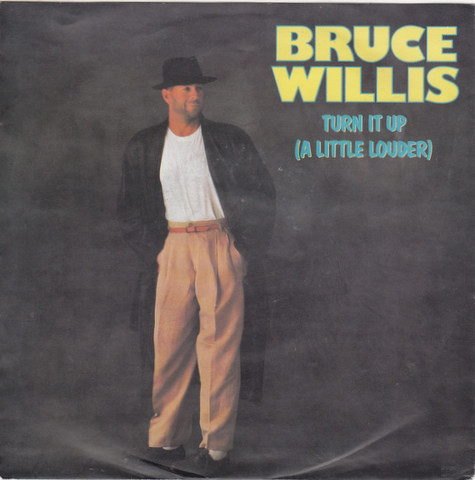
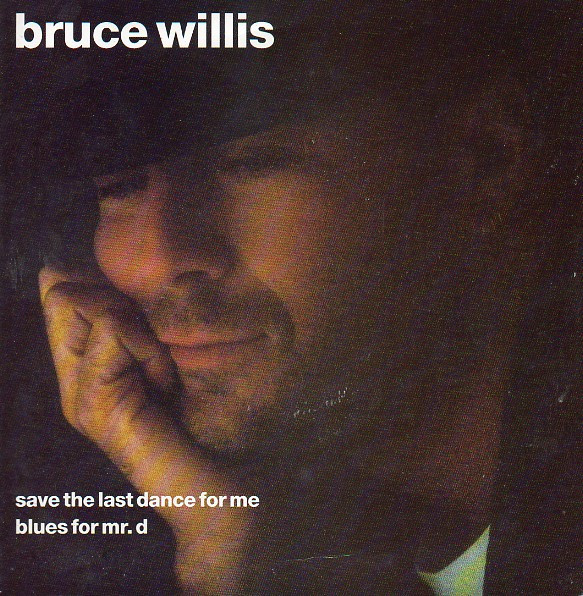
I suppose that Bruce Willis can sing but he doesn’t have a great voice. He actually doesn’t have a “singing voice”; when he sings, it’s with the same voice he uses to speak, if you know what I mean. What he can do is put a song over. He can do what a lot of fans of good music can do and that is channel the great singers of the past (heck, I can do that) and sing a song with all the character embedded in the millions of songs we’ve listened to for years. But I’ll give him credit; Bruce can apply the voice needed for the situation. He can sing softly as on “Under the Boardwalk” or “Save the Last Dance for Me” but listen to him on “Turn It Up (a Little Louder)” and you’ll hear a muscular shout that helps propel the song.
Around the turn of the millennium, Bruce put together a band he christened the Accelerators. Basically just a good time bar band, Bruce and the fellas would often perform at the openings of Planet Hollywoods, during the time Willis was part owner with Sly and Arnold. Sometimes it’s hard for me to believe – sometimes I even forget – that I have seen Bruce and the Accelerators live. Amazingly, they performed at a casino up the road from me in Gordon Lightfoot’s home town and my buddy and I went to see them. My main memory is of the keyboardist Bruce had with him. I seem to recall – though I can’t confirm this – that the guy was blind and had played with the Marshall Tucker Band. The Accelerators played MTB’s hit “Can’t You See” that night. My search for corroboration was somewhat hampered by the discovery that the Marshall Tucker Band was named after a Spartanburg, SC piano tuner who had worked at the rehearsal hall in which the MTB practiced at their formation. And the guy was blind. I have my ticket stub and I think it is pretty cool that I saw Bruce live but the show hasn’t really stayed with me.
Eventually, as we all know, Bruce Willis became a major international star and music simply took a back seat. But with the Accelerators we see that it was something that he never totally abandoned. For me, I will always be grateful to Bruno Radolini and cherish The Return of Bruno as I revisit it most every year when the spring rolls in and the land opens up again. There is something about the free spirit of his debut record that goes so well with those first few warm days after the long winter. The exuberant music recorded by Bruce Willis complements well his film work and his many engaging performances. May God bless my man Bruce and his family.

